Many of us take pride in our lawns, gardens, and landscaping. We spend hours each day tending to our outdoor vegetation to ensure it’s thriving. However, there often comes a time when we need to kill off certain growth to ensure our desired plants can absorb the nutrients needed to survive.
Whether you’re looking to kill your entire lawn to start from scratch or kill off weeds in your garden, you don’t need to invest in a pricy solution to get the job done. Additionally, many of the options below are safer than applying chemicals to your lawn or yard, which can be toxic to humans, pets, and other wildlife.
Here are eight of the best homemade grass killer ideas to test on your yard.
1. Vinegar
Ingredients: Distilled white vinegar.
Explanation: Due to the acetic acid in vinegar, spraying it on grass or weeds will dry them up and ultimately kill them. Vinegar itself is strong enough to get rid of grass and cause desiccation, dehydrating the grass so it can no longer survive.
Directions: Add distilled white vinegar to a spray bottle and spray your lawn or grass with vinegar, being careful not to get the solution on any other plants you don’t want to harm/kill. Choosing a warm day is best, as heat will speed up the process. Avoid doing this on rainy or windy days, and continue the process every few days until the grass has completely died.
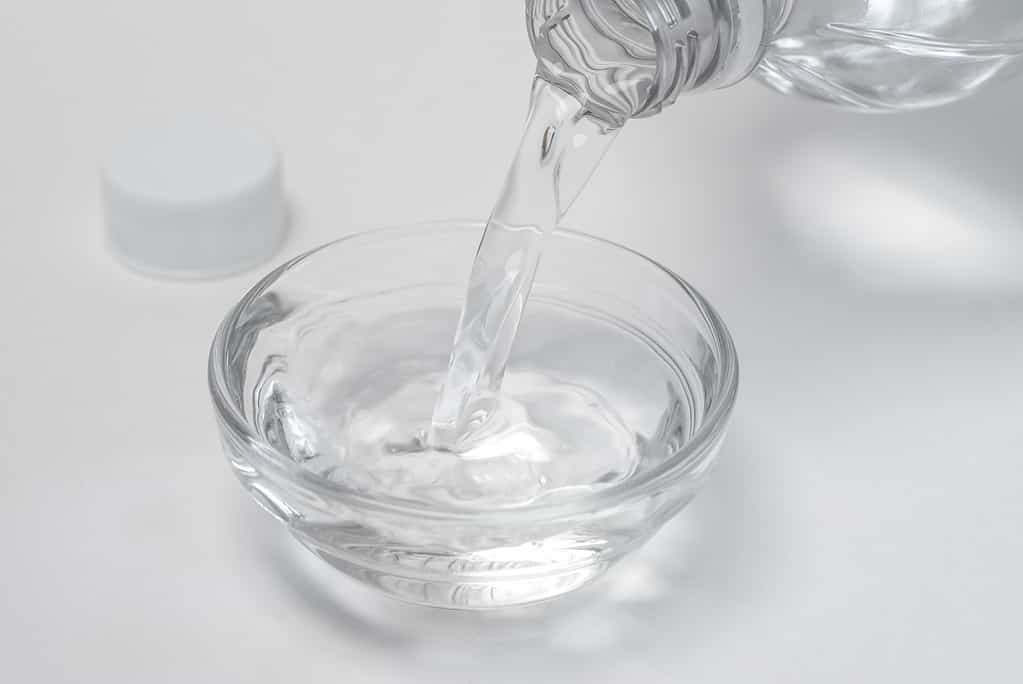
Pouring white distilled vinegar on vegetation will kill it at the source, so be careful only to direct it where you no longer want plants to grow.
©iStock.com/Michelle Lee Photography
2. Boiling Water
Ingredients: Boiling-hot water.
Explanation: Best for standalone weeds and small pockets of grass, boiling water can quickly kill the grass by scorching it. In fact, its heat will destroy the plant’s cell structure altogether, making it impossible to survive. However, if the water touches other vegetation, it will likely kill that off just as fast, so be careful where you pour it.
Directions: Boil water in a pot or a teapot on your stove so you can pour it over your grass. This method might be simple and the most cost-effective, but it can take hours of your time — especially if you’re trying to kill a large area of grass. This will likely require multiple trips from your kitchen and multiple boiling processes. Additionally, be careful not to spill the scorching hot water on yourself when transferring pots from inside to outside.
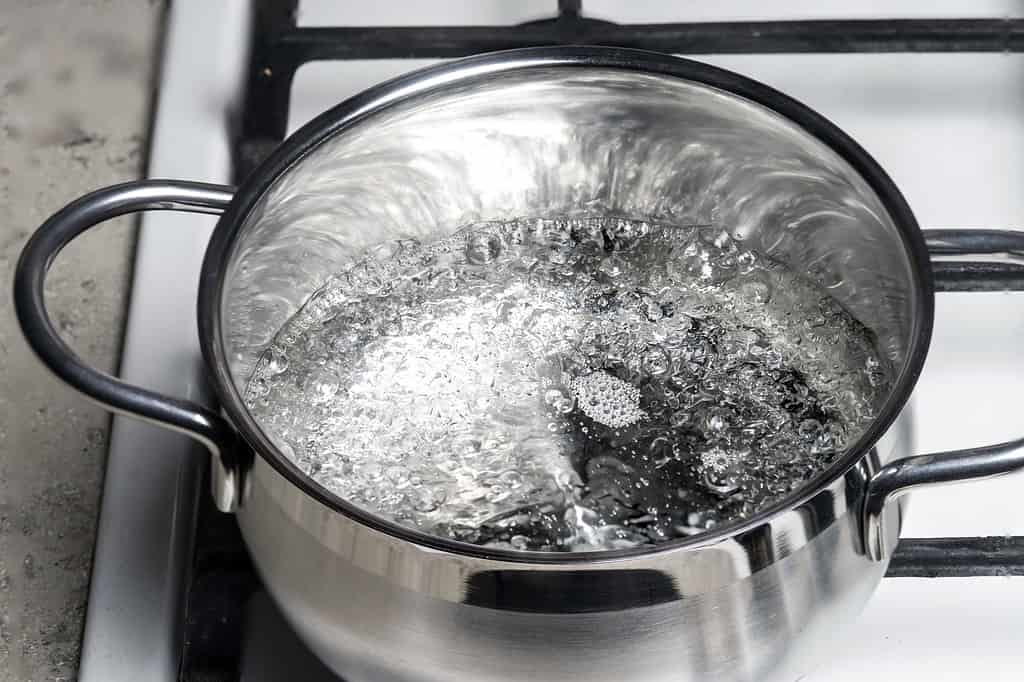
Boiling water and pouring it on grass will quickly scorch and kill it.
©VladK213/iStock / Getty Images Plus via Getty Images
3. Rubbing Alcohol Solution
Ingredients: Rubbing alcohol and water.
Explanation: Rubbing alcohol eliminates moisture from the grass, drying it out so it can longer survive. Because the grass will absorb the alcohol through its roots as though its water, it will eventually become dehydrated. It might also experience burns from the high alcohol content.
Directions: Mix one quart of water with two tablespoons of rubbing alcohol until completely combined. Then, pour the solution into a spray bottle and spray it directly onto the grass. For best results, you’ll want to do this on a warm, sunny day. Avoid rainy and windy days to prevent the solution from diluting or spreading to other vegetation.

Spraying a rubbing alcohol solution onto your lawn will kill the grass in no time.
©Melissa E Dockstader/Shutterstock.com
4. Salt Solution
Ingredients: Salt and water.
Explanation: Like many of the other solutions on this list, salt kills plants by dehydrating them. Once a plant’s roots are exposed to sodium, they won’t be able to absorb water and hydrate in the same way as before. However, keep in mind that once the salt is added to the soil, it’s difficult for the soil to recover. In other words, don’t use this solution if you want to plant new grass in the same area/soil soon, as it likely won’t flourish in that environment.
Directions: While you can simply sprinkle salt on your grass and then water it to kill it, mixing the salt with water is more effective. In doing so, you will create a saltwater solution that better covers the plants and gets absorbed through their roots.
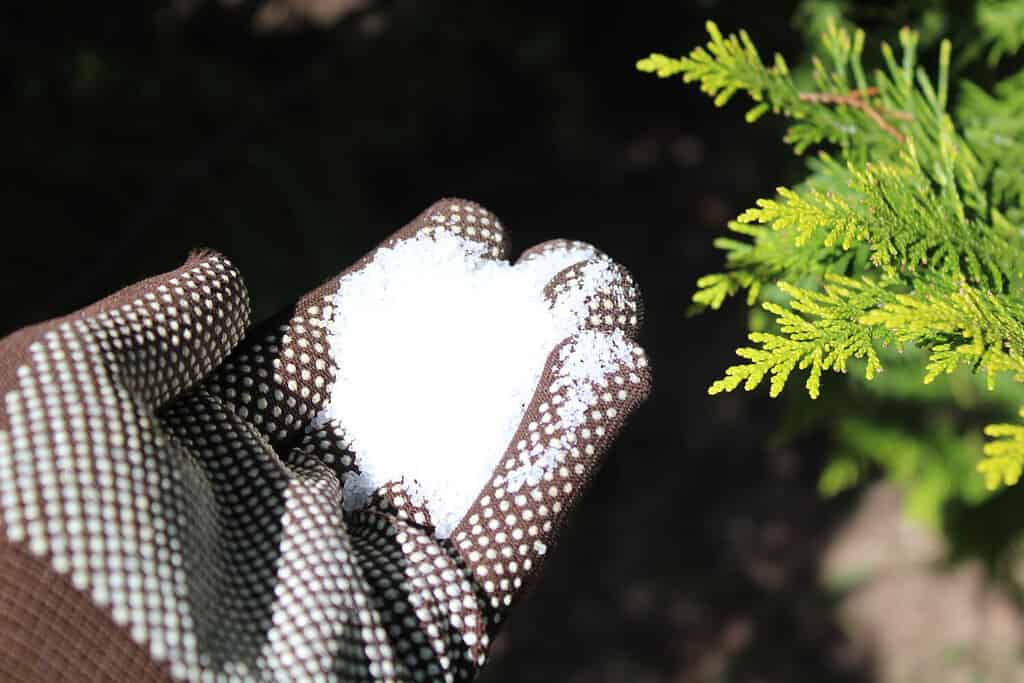
Pouring salt or a saltwater solution onto your grass will cause it to dehydrate.
©Martina Unbehauen/Shutterstock.com
5. Baking Soda
Ingredients: Just baking soda.
Explanation: Baking soda is known to kill weeds, crabgrass, fungus, and moss, but it can destroy an entire lawn if appropriately used. This is because sodium bicarbonate, which is what baking soda is made of, is alkaline and desiccates vegetation, especially when applied in concentrated amounts.
Directions: To kill your entire lawn or areas of grass/weeds with baking soda, first wet your lawn by watering it or waiting until it rains. Then, apply a liberal amount to the grass blades, re-applying every few days until the grass is completely dead.
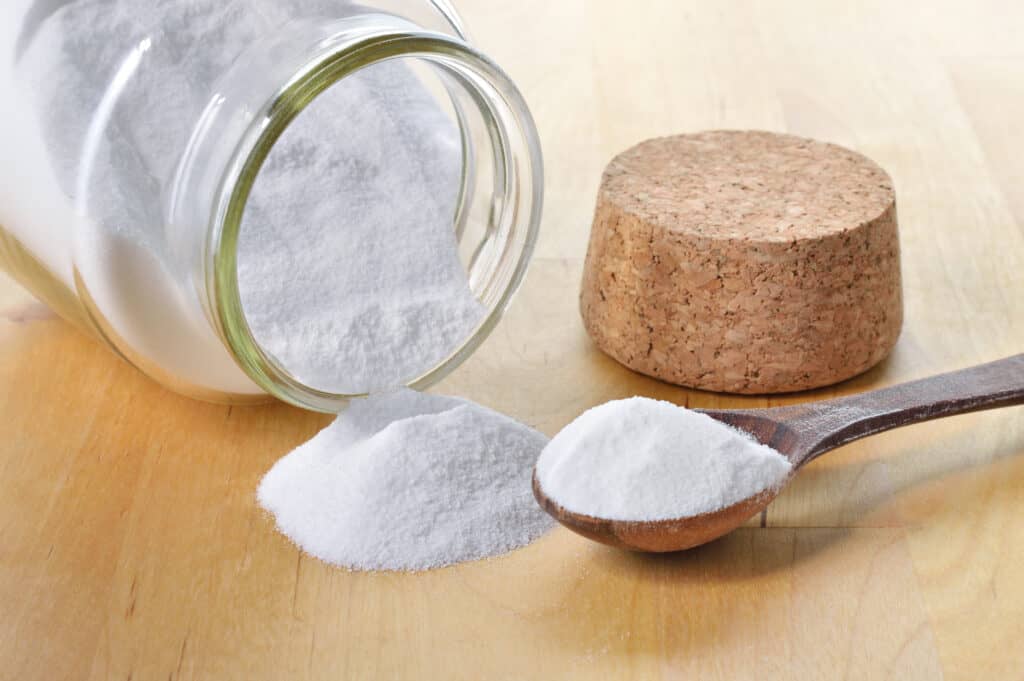
Baking soda quickly kills plants, so be careful where you spread it to avoid killing other vegetation.
©Geo-grafika/Shutterstock.com
6. Mulching
Tools: Woodchips and/or other natural mulch.
Explanation: If you want to kill off your entire lawn, mulching is a great way to do so. Covering your grass with mulch will deprive it of sunlight, which is necessary for its survival. This method might take a few weeks, but it will surely kill your lawn in its entirety.
Directions: To properly mulch your lawn for killing, you first must mow it as short as you can get it. After, cover your grass with heavy natural mulch such as woodchips or even rock mulch. However, you must use at least 10 to 12 inches of mulch. Otherwise, it might actually encourage your grass to grow more. Wait a few weeks for your lawn to fully die off.
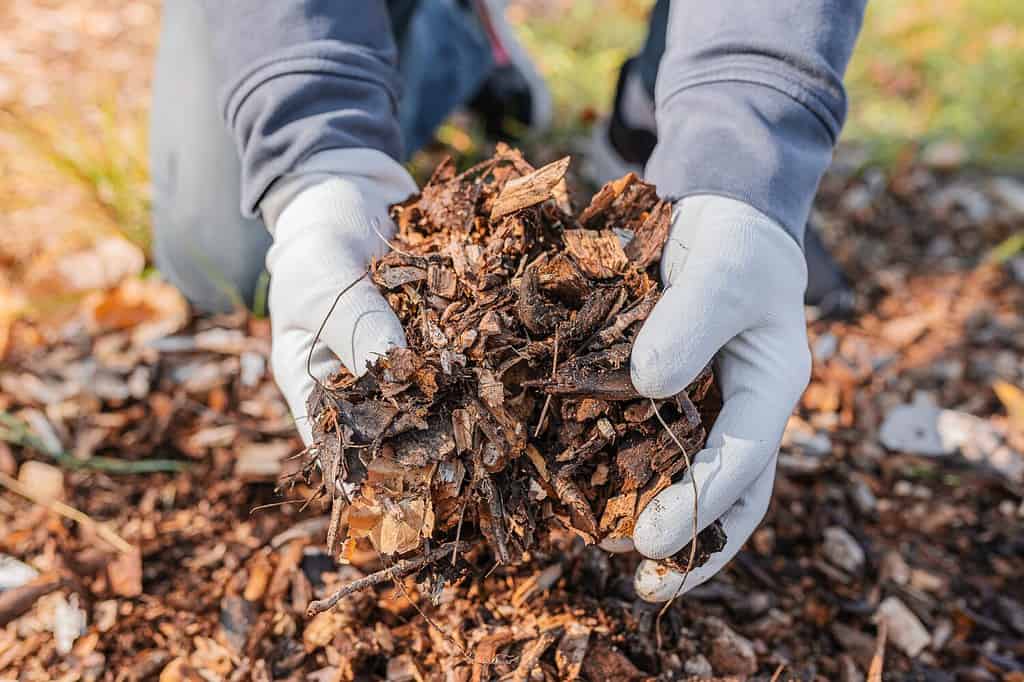
Mulch prevents grass from growing, as it shields the grass from necessary sunlight.
©larisa Stefanjuk/Shutterstock.com
7. Layering
Tools: Newspaper, cardboard, compost, and natural mulch.
Explanation: Similar to mulching, layering involves covering your lawn so the sunlight can’t reach it. However, in addition to mulch, layering also involves materials like newspapers, cardboard, or compost to help with the decomposition process of your grass.
Directions: After mowing your lawn, add your material (e.g., newspaper and cardboard) over your grass as if you’re making lasagna out of your lawn, adding layer after layer. Wet down the layers of compost and cover it with mulch. Eventually, within a few weeks to a few months, your grass will die, and you can start over if you’d like to replant vegetation in the area.

Layering materials like newspapers or cardboard will eventually deprive your lawn of much-needed resources for survival.
©Wirestock Creators/Shutterstock.com
8. Dish Soap Solution
Ingredients: Regular dishwashing soap, distilled white vinegar, and salt.
Explanation: Like vinegar and other solutions, dish soap causes the desiccation of grass, meaning it dehydrates it until it can no longer survive. Dish soap is also made to treat oil and grease on plates and cooking materials, so its properties easily break down the oil-based tissues in the grass’s roots. However, mixing dish soap with both vinegar and salt creates an effective grass-killer solution.
Directions: Mix together one gallon of white vinegar, one cup of table salt, and one tablespoon of liquid dishwashing soap to create your solution. Then, pour it into a spray bottle so you can properly spray it throughout your lawn. This trio will kill your plants in no time.
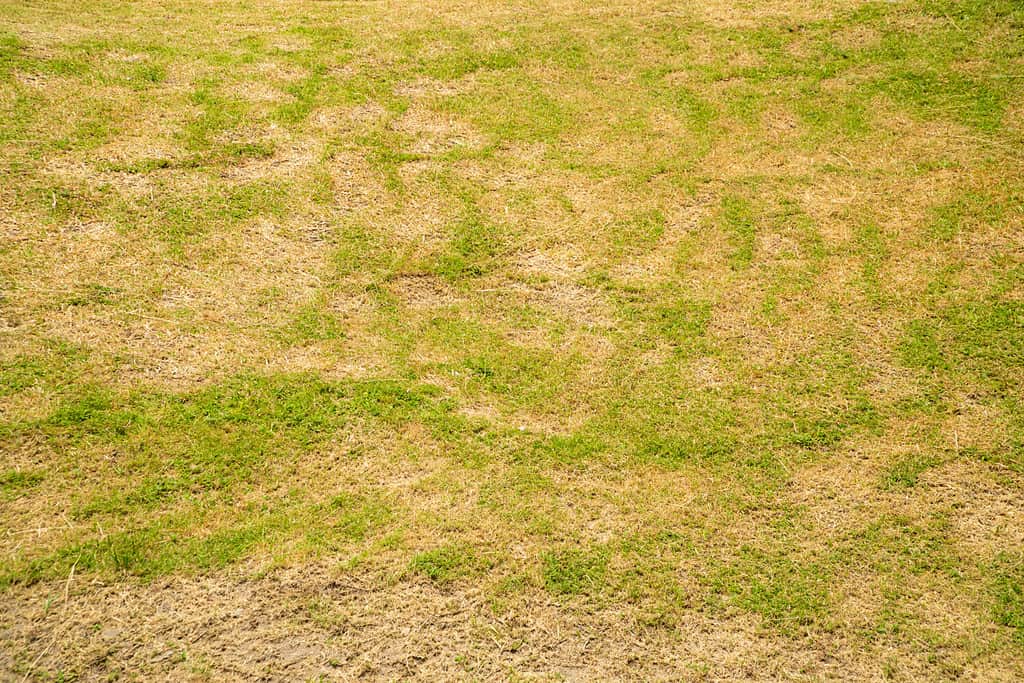
Using a dish soap solution is a surefire way to kill your grass and start from scratch.
©SingjaiStocker/Shutterstock.com
The Best Homemade Grass Killers
| Ranking | Idea | Ingredients/Tools |
|---|---|---|
| 1 | Vinegar Solution | Distilled white vinegar, spray bottle |
| 2 | Boiling Water | Boiling, pot, and stove/other heating equipment |
| 3 | Rubbing Alcohol Solution | Rubbing alcohol, water, and spray bottle |
| 4 | Salt Solution | Salt, water, and spray bottle |
| 5 | Baking Soda | Baking soda to sprinkle |
| 6 | Mulching | Mulch, woodchips, etc. |
| 7 | Layering | Newspaper, compost, cardboard, and mulch |
| 8 | Dish Soap Solution | Dish soap, vinegar, salt, spray bottle |
The photo featured at the top of this post is © Sheryl Watson/Shutterstock.com
Thank you for reading! Have some feedback for us? Contact the AZ Animals editorial team.







